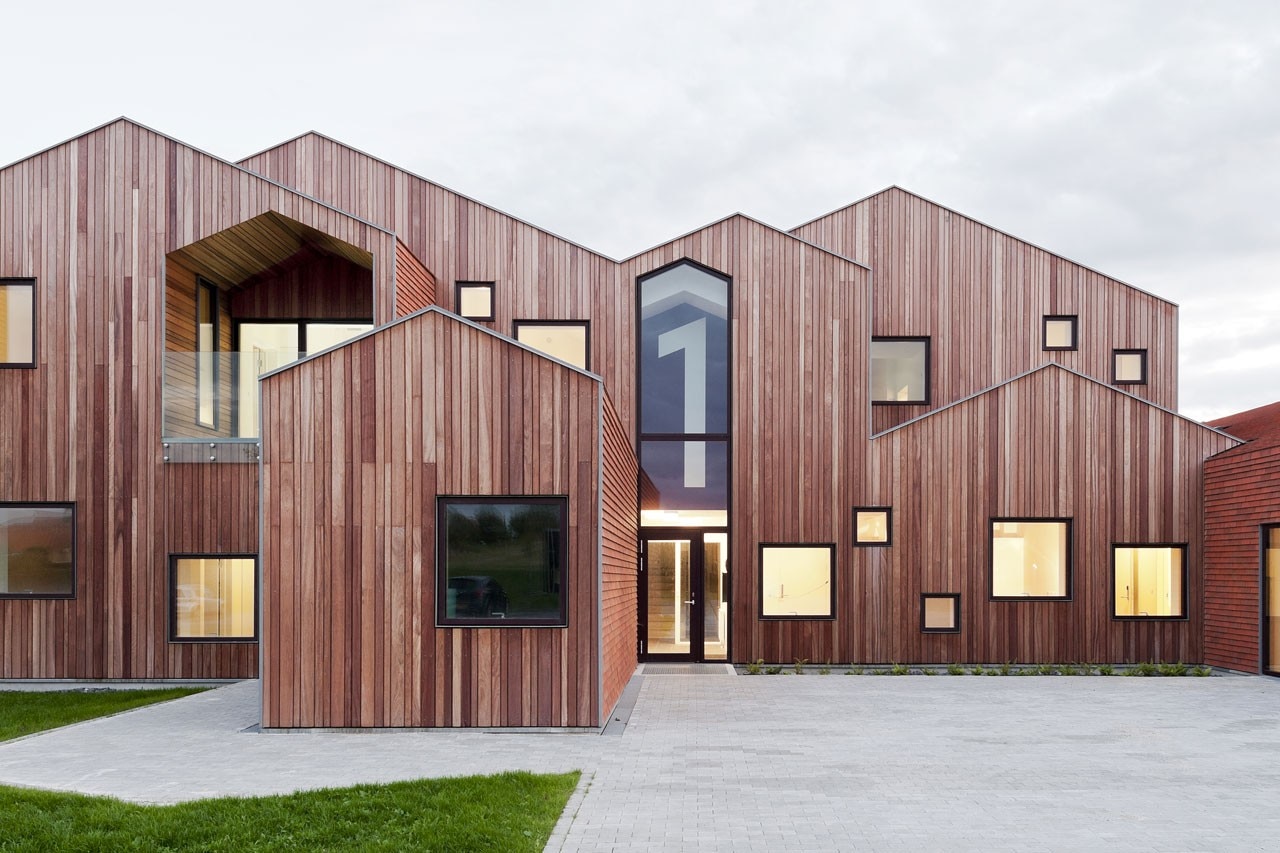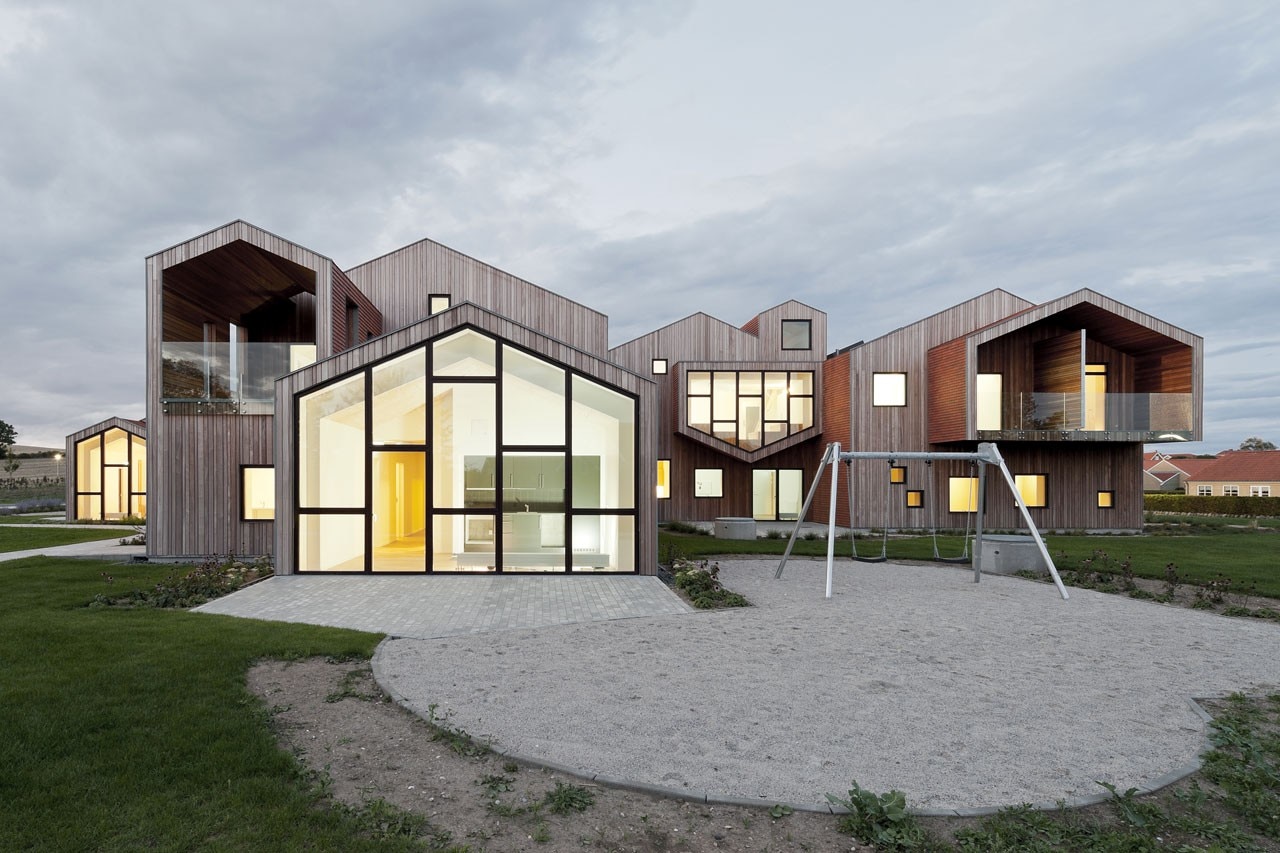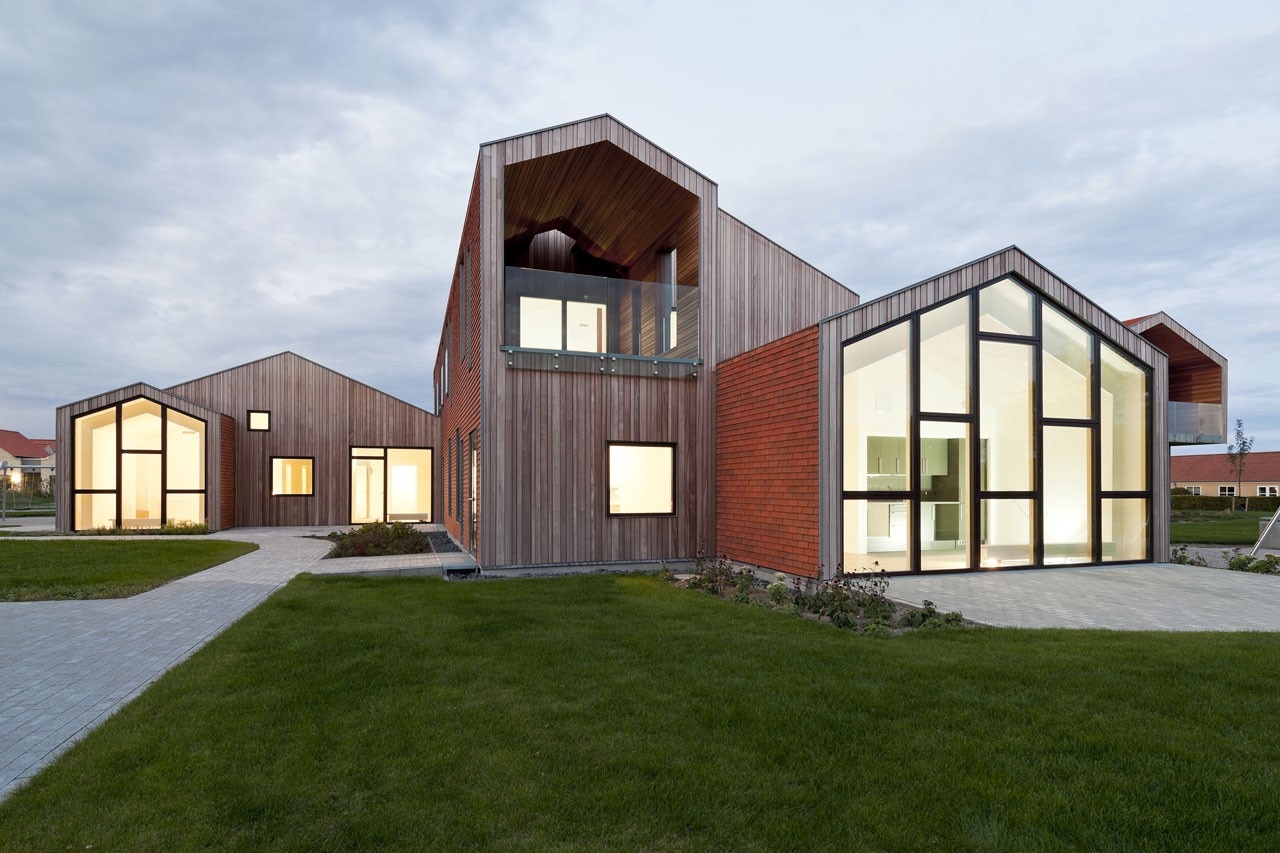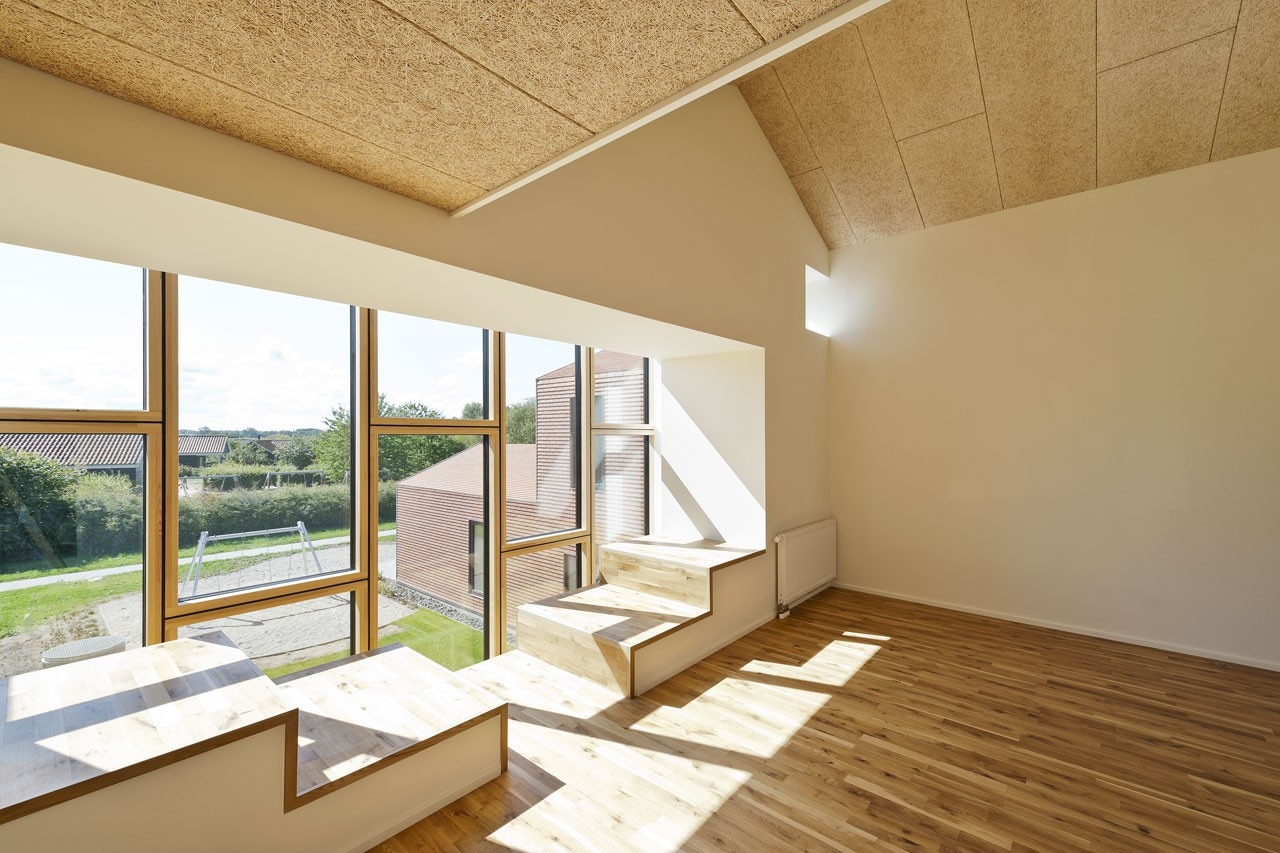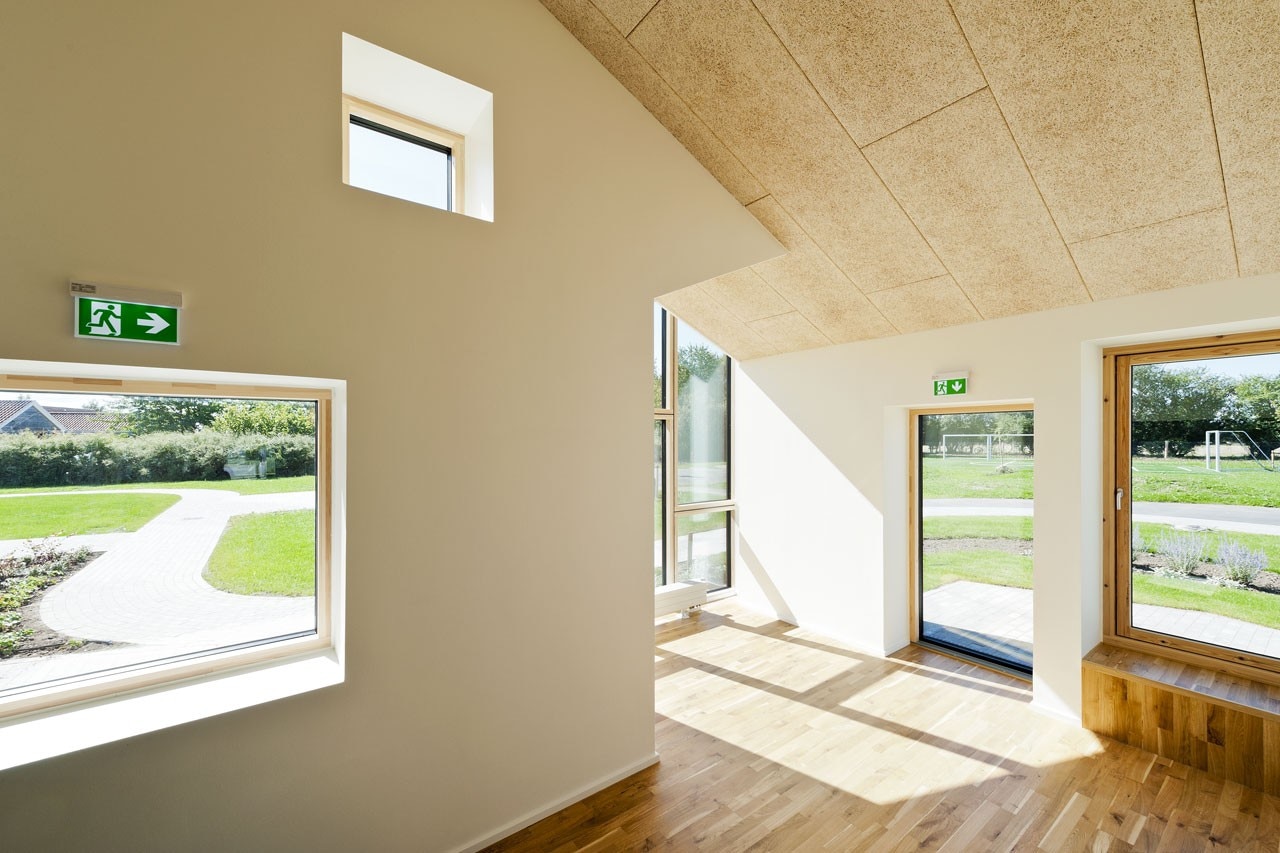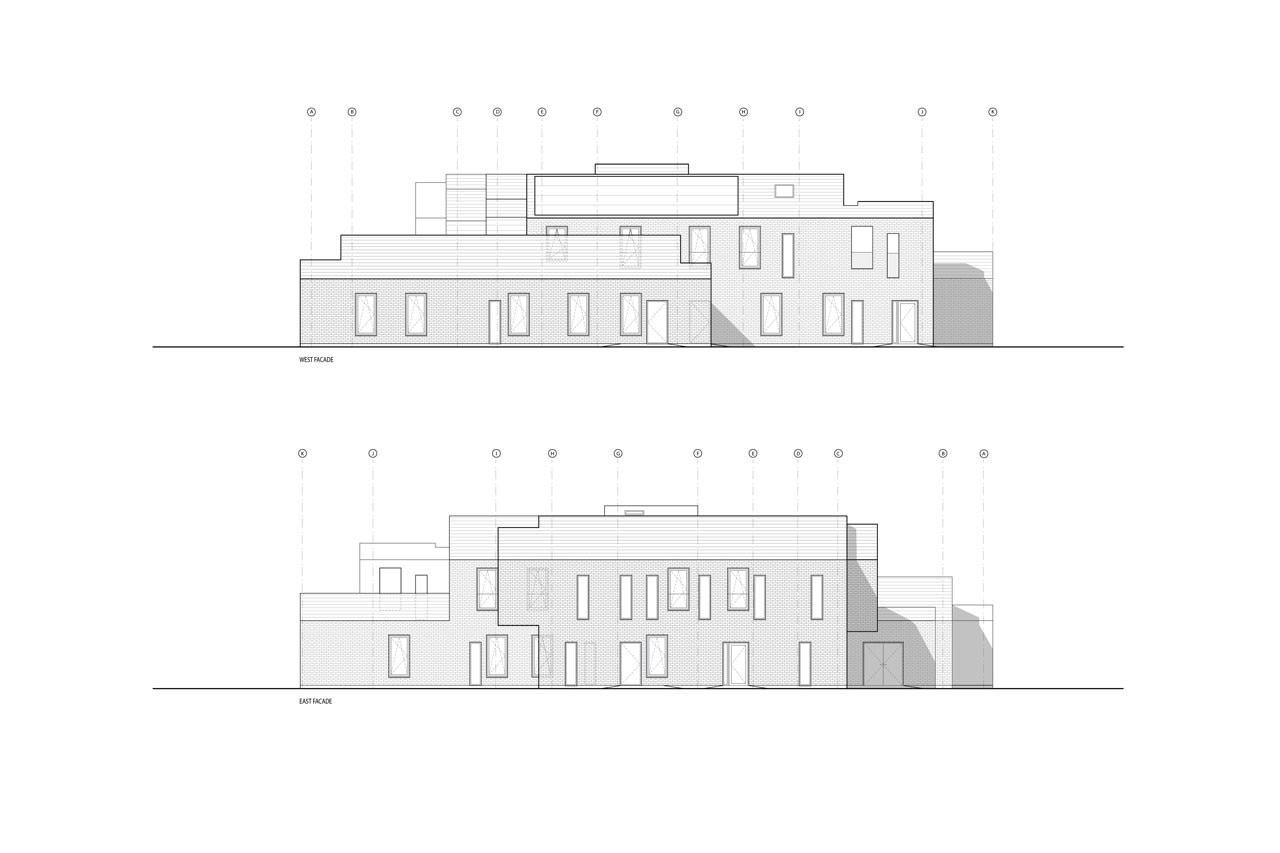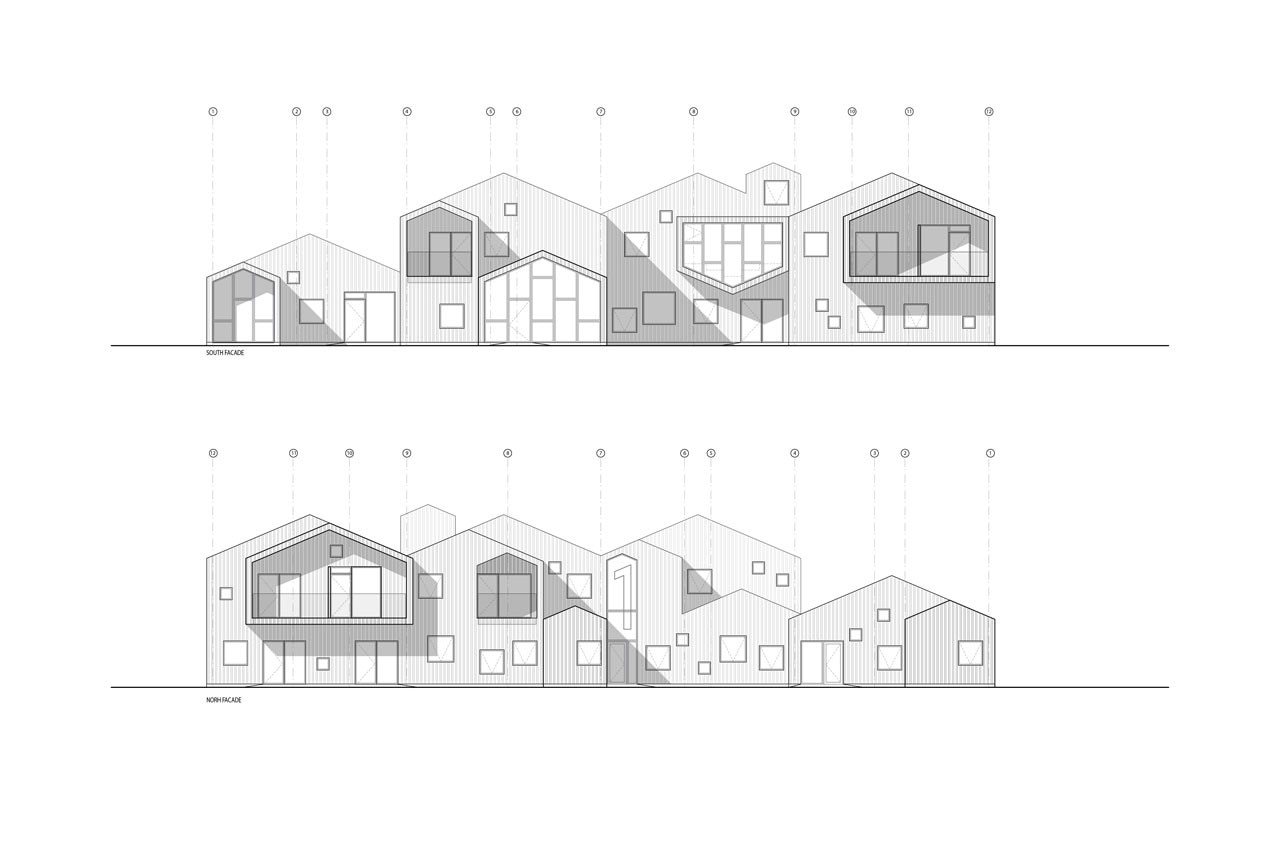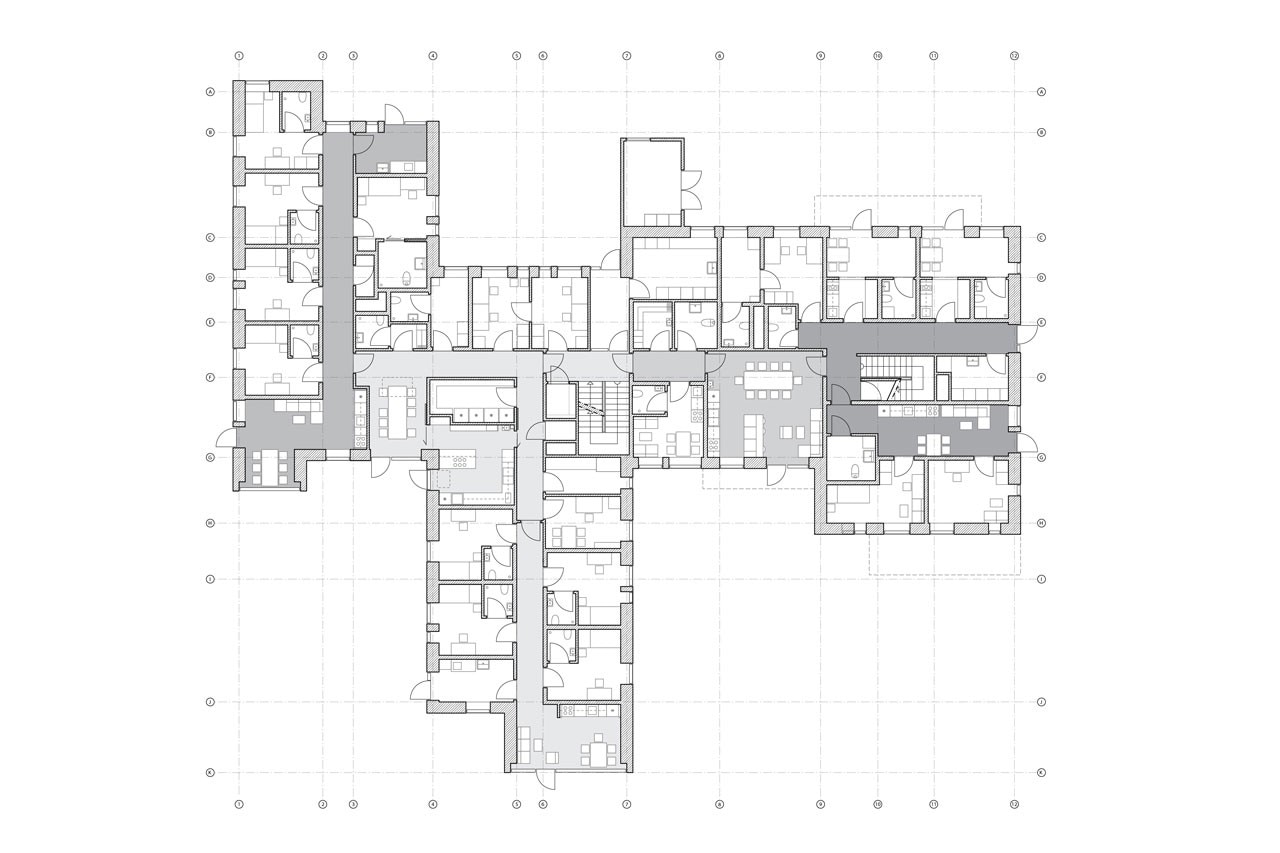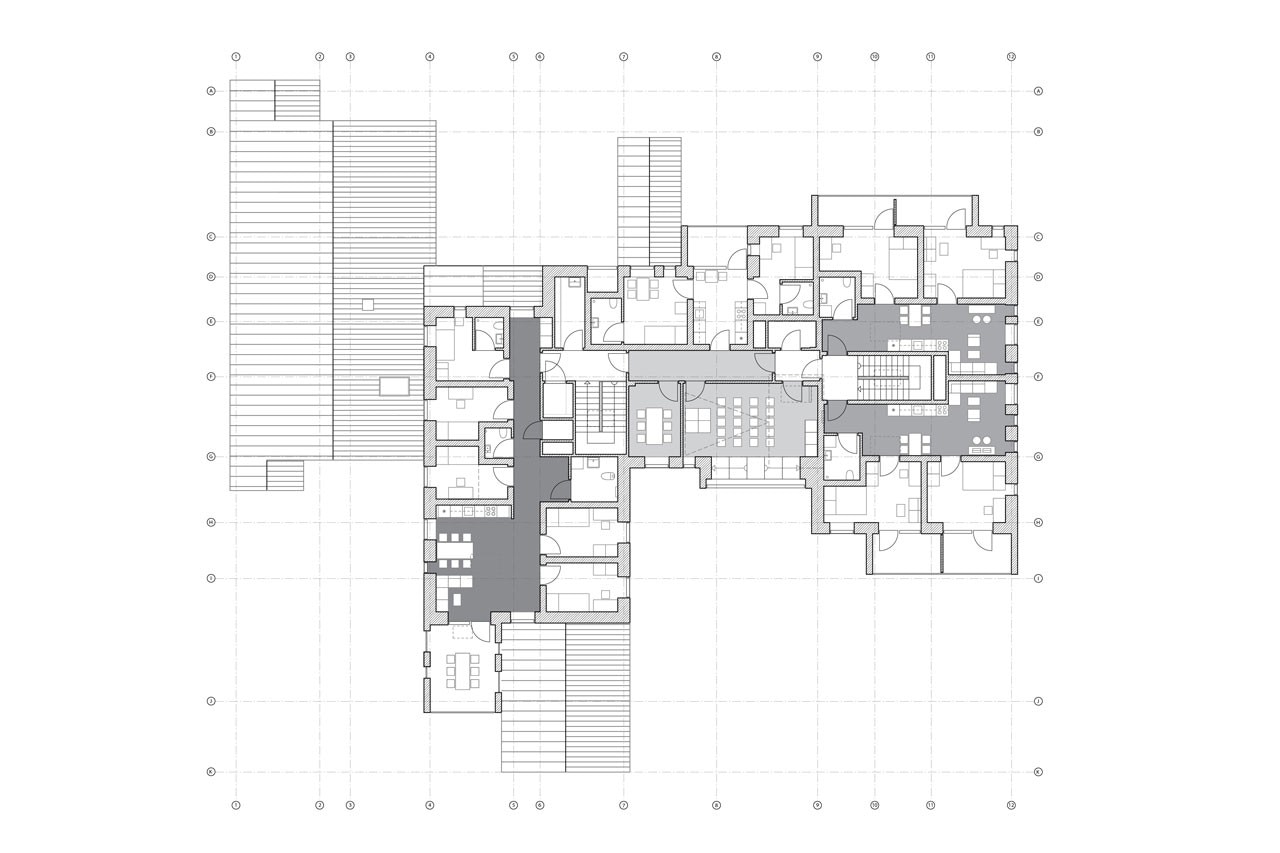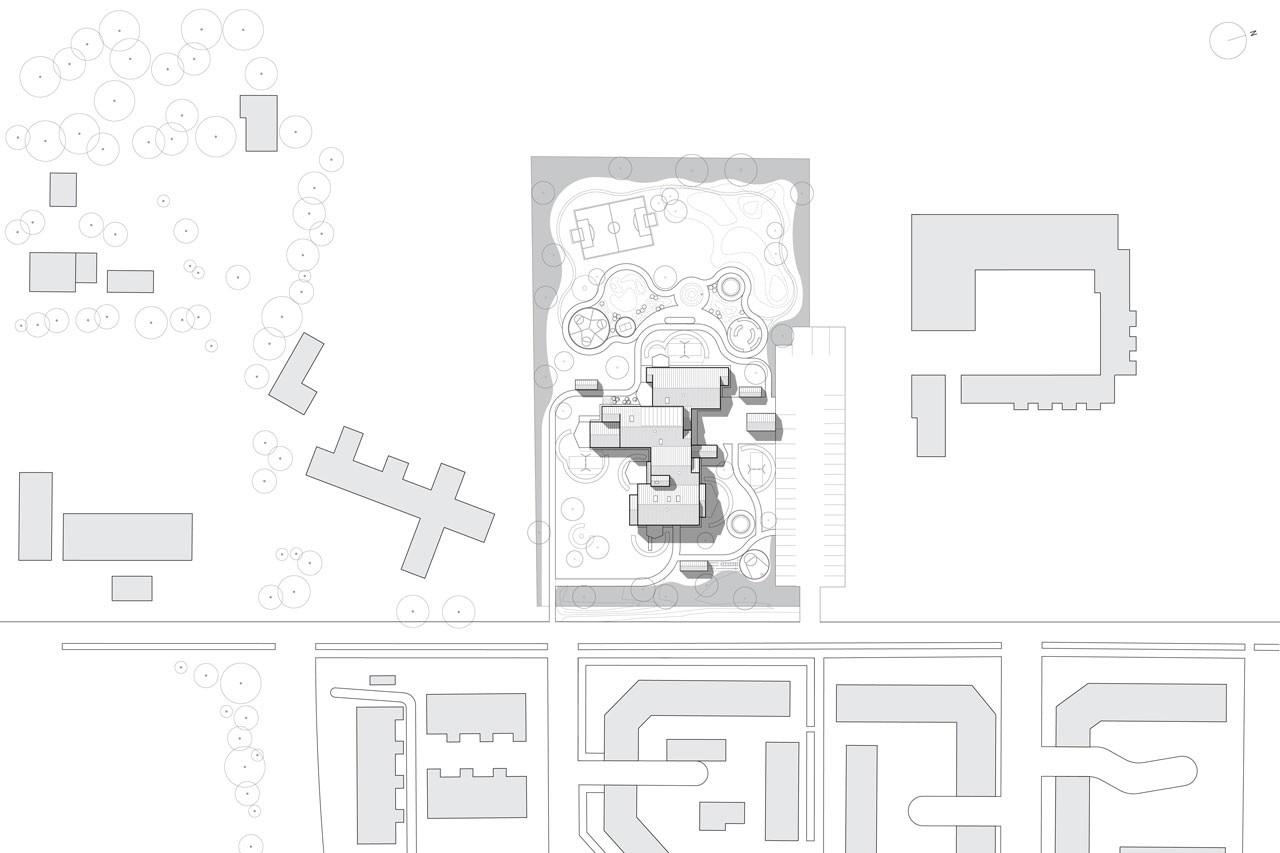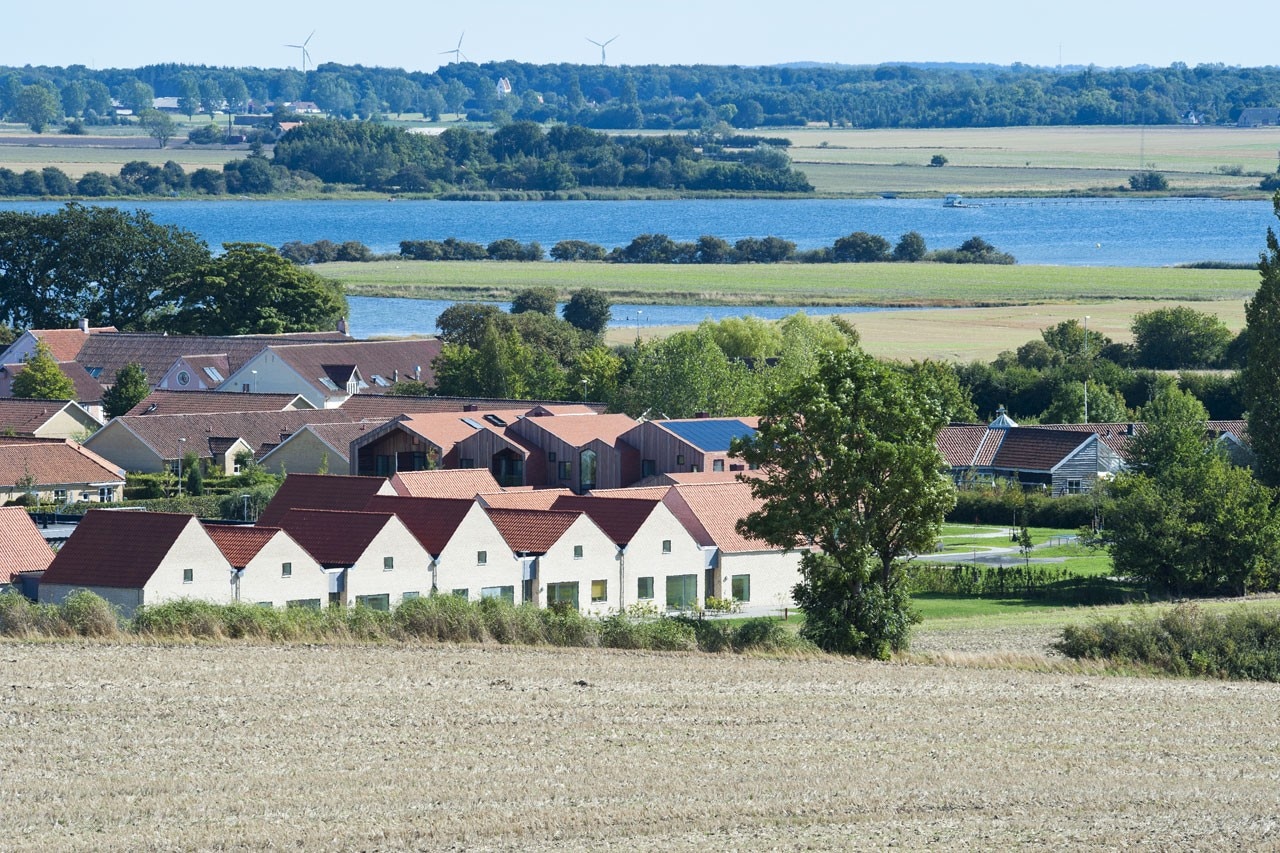
Whether you look at children’s drawings or a web browser’s stylised icon, at all ages we recognise and use the rectangular pitched-roof building with a chimney as a sign for “home”. It is the visual essence of the functions it contains – both literally and symbolically.
The design for the new children’s home takes the familiar basic shapes of the typical Danish home as its natural starting point: the classic pitched-roof house and the dormer motif. The two elements are used in their most simplified form to create a recognisable exterior appearance and integrate the building into the surrounding residential area. They make up the project’s underlying architectural DNA, which expresses inclusion, diversity and an atmosphere of safety.
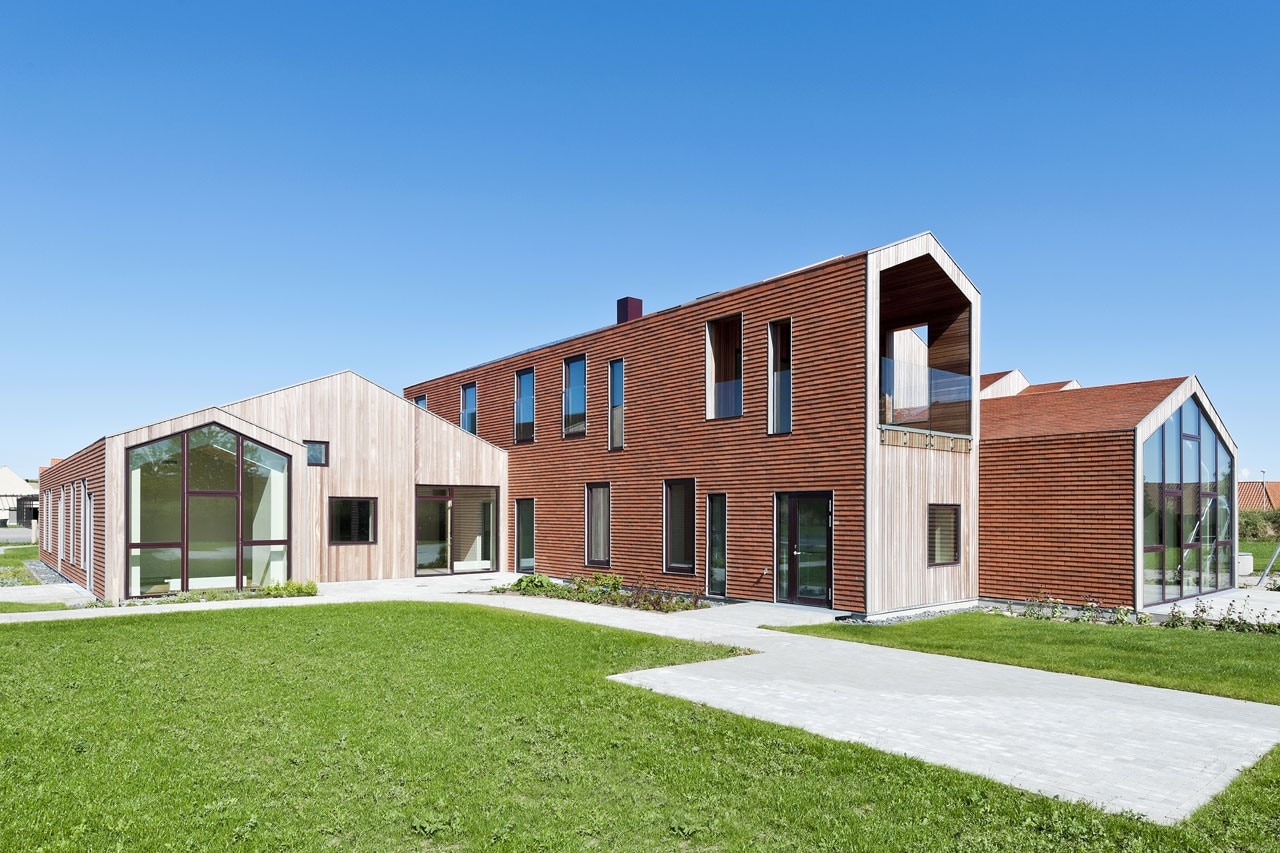
By combining and applying the basic elements in a new and playful way the care centre is highlighted as an extraordinary place with its own identity. The basic geometric shape is modified by the distinctive dormer profiles, which grow into and out of the building volume, are turned upside down and even rise up to form a view point.
The concept adds spatial variation and functional flexibility to the interior organisation. The dormers give the residents the opportunity to set their own mark on the building by involving them in the arrangement, décor and use of these “bonus spaces” according to varying needs and changing activities. The varying sizes and orientations allow for a wide range of applications such as reading and movie corners, a study for homework, areas for painting and crafting, common rooms for festive events etc.
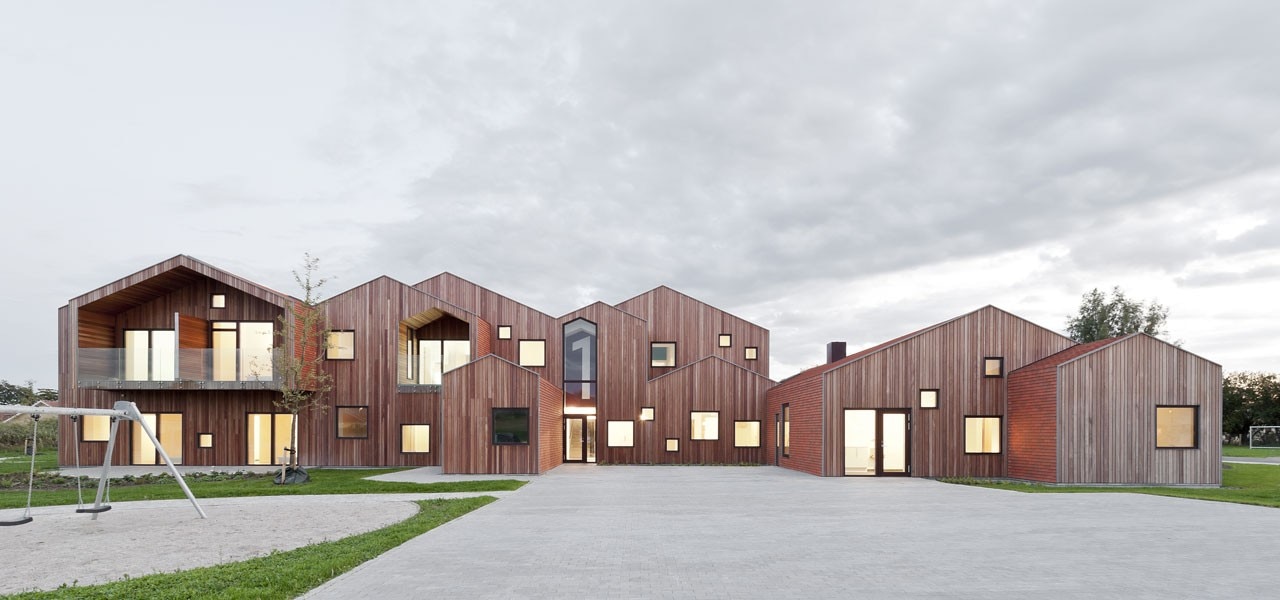
The overall organisation consists of four interconnected houses. The elongated wings of the traditional institutional building are split up and contracted to form a compact building with offset volumes. Thereby, the building scale is reduced and self-contained, varied units are created for the different groups of residents. Each age group has its own house in connection with a central unit for flexible use. The layout aims at providing the residents with a sense of belonging to their unit – a homely base where they can retreat alone or in smaller groups.
The smaller children’s units are retracted from the street and oriented towards the garden with direct access to the playground. The central unit contains the main entrance in connection with the parking lot, which gives the staff an overview of arriving visitors and deliveries without affecting the housing units. The teenagers’ unit is the most extrovert section of the building and is oriented towards the street. The older residents are encouraged to use the city and engage in social activities on equal terms with their peers.
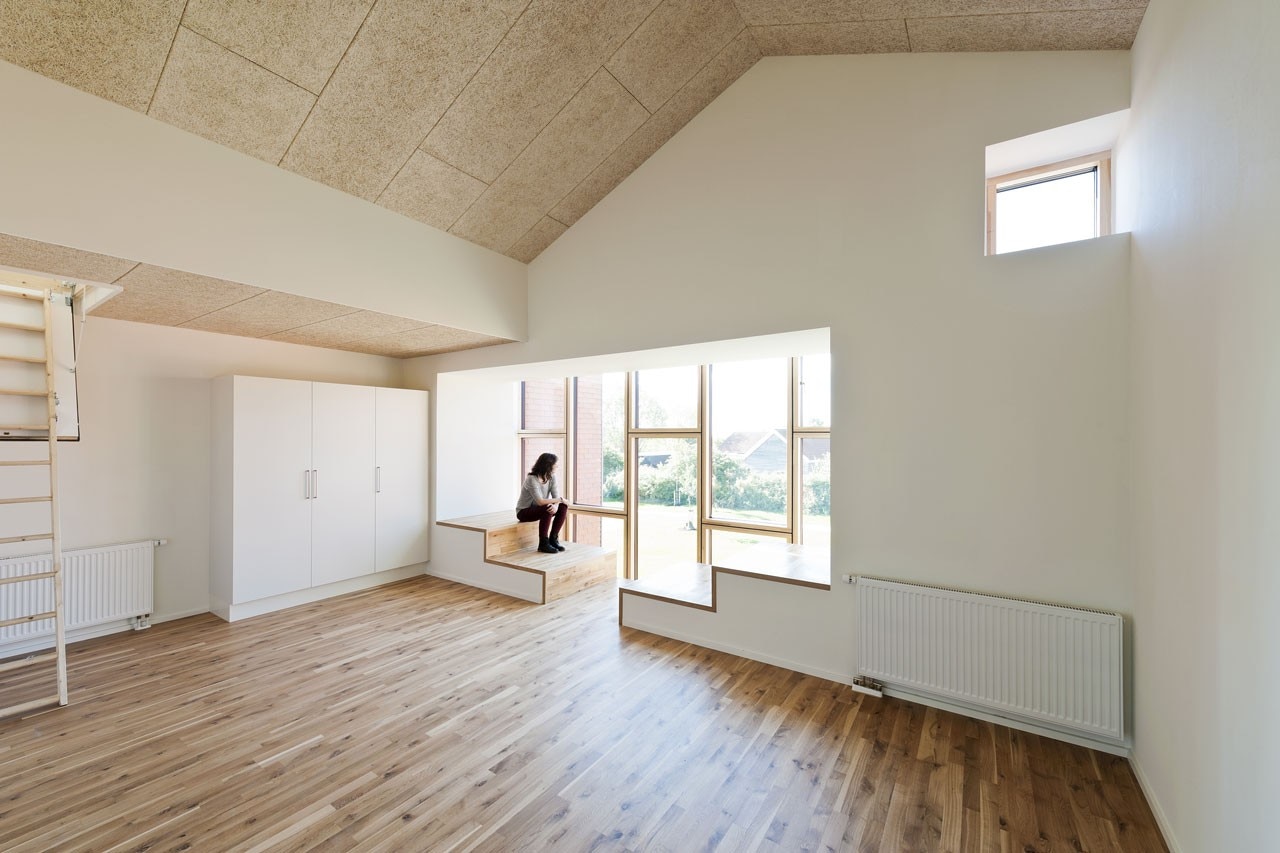
Typical institutional functions such as administration, staff rooms and storage are mostly located in the basement and on the first floor so that they get “lifted” out of the resident’s everyday life and minimise the feeling of being in an institution.
The building’s rational organization ensures short distances and proximity between the different units so that the personnel always are close to every resident. Thus, the personnel’s working procedures are incorporated effectively in the daily routines, thereby freeing more time for taking care of and spending time with the children – more home, less institution.
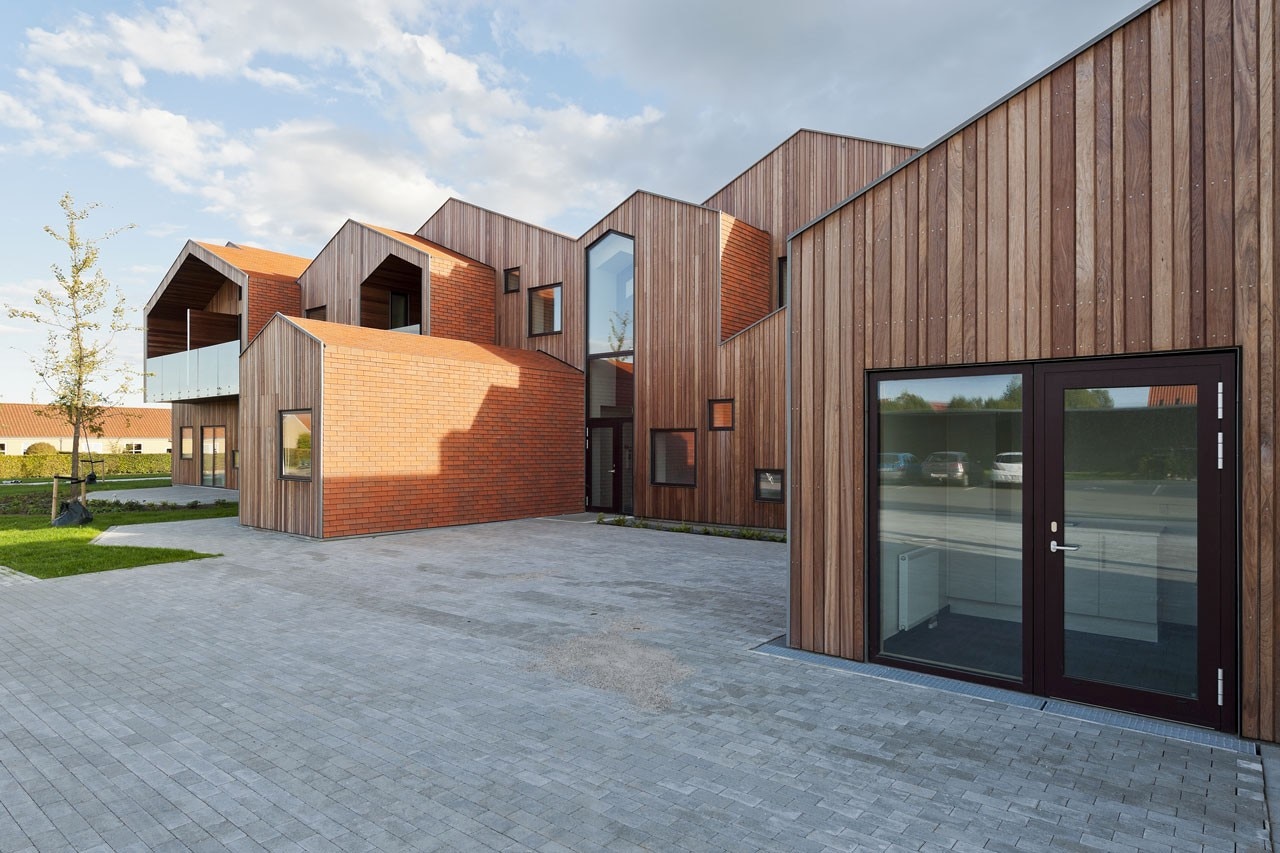
Our House – The Children’s Home Of The Future, Strandgårds Alle, Kerteminde, Denmark
Program: care centre
Architects: Cebra
Landscape architect: PK3
Engineer: Søren Jensen
Client: Kerteminde Municipality
Area: 1,500 sqm
Completion: 2014


